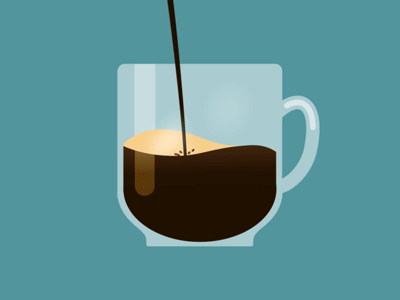 Aug 16
Aug 16 Podcast #909: Sonos Company Profile
 Sonos was one of the first companies that sent our fledgling podcast equipment to review. We were just starting as were they. It made us feel like we were legitimate and could make a go of this podcast thing. Now almost a thousand podcasts later we are still going and so are they. One of us has grown exponentially and the other records a podcast every week! This week we are going to profile Sonos Inc. Much of this information comes directly from the Sonos website.
Sonos was one of the first companies that sent our fledgling podcast equipment to review. We were just starting as were they. It made us feel like we were legitimate and could make a go of this podcast thing. Now almost a thousand podcasts later we are still going and so are they. One of us has grown exponentially and the other records a podcast every week! This week we are going to profile Sonos Inc. Much of this information comes directly from the Sonos website.
| Download this Episode. |
Support the show with Patreon!
Listen to the show
Today's Show:
News:
- DISH receiver now works with Google Assistant
- Spotify grows to 108M paid subscribers
- Symfonisk speakers hit the shelf
- Kohler unveils smart faucet
- Philips Launches New WiFi-Connected Lightbulbs Not Named HUE
Other:
Sonos Company Profile
Sonos was one of the first companies that sent our fledgling podcast equipment to review. We were just starting as were they. It made us feel like we were legitimate and could make a go of this podcast thing. Now almost a thousand podcasts later we are still going and so are they. One of us has grown exponentially and the other records a podcast every week! This week we are going to profile Sonos Inc. Much of this information comes directly from the Sonos website.
Founding
Founded Aug 22, 2002 Sonos is headquartered in Santa Barbara, California and currently employs just under 1500 people. Founders - John MacFarlane, Tom Cullen, Trung Mai, and Craig Shelburne - conjured a daring vision based on technology that didn't exist at the time. Fueled with the insight earned from success in the first phase of Internet-based business-building, they chose as their next mission a new way to bring music to every home - wirelessly, in multiple rooms, from PCs and the Internet, with awesome sound. They hired an amazing team who built amazing products from scratch, and music devotees all over the world found a new brand to fall in love with.
John MacFarlane moved to Santa Barbara in 1990 to get his Ph.D. from the University of California-Santa Barbara. Instead he saw the promise of the Internet and built Software.com along with Craig, Tom and Trung. After Software.com merged with Phone.com in 2000 to create Openwave, they moved on to figure out together what to do next.
Whatever was going to be next, they knew they wanted to stay together, and stay in Santa Barbara, due to the roots they and their families had begun to establish there. It was, perhaps, the beginning of a habit of unorthodox choices to add both a degree of difficulty and a fresh perspective to the work.
The Problem
In 2002, great music in the home meant wires hidden behind bookshelves and furniture, connecting to speakers the size of bongo drums; audio jacks plugged into the right holes on the backs of receivers and players; physical media primarily in the forms of compact discs and tapes - and if you wanted a multi-room experience, an afternoon (or weekend) drilling through walls to snake wires from a central receiver to speakers throughout your home.
The Solution
Developing a wireless multiroom home audio solution that was easy to deploy and control. The solution required setup that would be fast and intuitive for anyone, it would have to integrate well with any technology or service, and it would have to deliver superior sound in any home environment. Cross-technology integration meant choosing Linux as the technology platform, but no drivers existed at the time for audio, for controllers’ remote buttons or scroll wheels, or for the networking that was needed. The Sonos team had to build them.
Great multi-room music meant inventing a method to get audio instantly and wirelessly to multiple speakers without listeners noticing any gaps, ever. The team recognized mesh networking as the key. By 2003, it was a concept that had seen use in highly mobile environments, like battlefields, but never applied in the home or to the stringent demands of music experience. To develop and implement, Sonos had two choices: an easier engineering solution at the expense of its ideal user experience, or making it simple and great for users and excruciatingly difficult for its engineers.
With the basic framework of the system built by early 2004, filled with new and untested technologies, the next phase focused on the scourge of software engineers: bugs.
Despite all the ingenuity at hand, the prototypes couldn’t communicate wirelessly to each other from even ten feet apart. And particularly with embedded systems, at the time developer tools and debuggers did not exist.
So Nick and John took a road trip, the prototypes stowed in a cardboard box in the back seat of John’s car, to Silicon Valley to see John’s friend and hardware supplier, whose advice boiled down to one word: antennas.
Developers know that the most frustrating bugs are the so-called “irreproducible” bugs. Many of them emerged from testing at Sonos employee homes in and around Santa Barbara – including one especially frustrating bug, only reproducible at one person’s house, that required a packet sniffer to identify and fix.
Recalls Andy Schulert: “We’ve got our first 15 to 20 prototypes, we feel great about them, we take ten of them to someone’s house to try it out. We set them up, and it’s a colossal failure. They barely worked. We had to dial back to just two, figure out the issues, then add a third, and so on. Excruciating, but worth it.”
By summer 2004, Sonos had tackled the bugs, prototypes were beginning to function with the necessary reliability, and the team had started sneak-peeking the system to others in the industry. This confirmed what they had been beginning to recognize: the hard work to that point had paid off in the form of something genuinely new.
Breakthrough music experiences often debut with certain signature songs. MTV, for example, famously launched with “Video Killed the Radio Star,” by The Buggles.
How about Sonos? The first song played for the public on Sonos’ first product, the ZP100, was The Beastie Boys’ “No Sleep ‘Til Brooklyn,” at full volume, produced by longtime Sonos supporter/adviser Rick Rubin.
Sonos engineers could affirm the “no sleep” part because of all the work they’d put in leading up to the ZP100’s launch. But getting the experience just right for customers required a more practical approach to selecting songs for testing, dictated by the early days of scrolling through long alphabetical-order lists of songs and bands.
So the most-played song by Sonos engineers for testing was “3AM” by Matchbox 20, for no other reason than it was at the top of a list. The most-played band: 10,000 Maniacs.
Shipping
At long last, on January 27, 2005, Sonos shipped its first product, the ZP100. Industry accolades, strong product reviews, and positive media coverage followed soon after, and sustained over the first months and years of availability. Reviewers lauded its simplicity of setup, design, reliability, and great sound. The dean of product reviewers, Walt Mossberg (then at The Wall Street Journal), wrote, “The Sonos System is easily the best music streaming product I have seen and tested.”
Its second- and third-generation systems were efforts toward streaming direct to its players, taking the PC entirely out of the equation. They started in 2006, with Rhapsody as its first music service. It was a big turning point for the company, and it was not at all obvious at the time.
With the launch of the iPhone in 2007 and Apple’s App Store sparking a boom for apps, Sonos launched its own, free app for iPhone users, meaning you could turn your iPhone into the controller, without buying the Sonos remote. (Android users got their Sonos app in 2011, and Sonos phased out its own controller hardware in 2012.)
Then in November 2009, Sonos released the PLAY:5, a truly smart, all-in-one speaker for $400, about a third of the inaugural price of Sonos’ original product, the ZP100 (which with speakers and controller, cost about $1200 in 2005). Their hopes for sustained, strong sales growth were realized. This also marked a more decisive shift toward continual software upgrades for ongoing improvement in the products, an ever-more-exacting focus on sound quality, and closer relationships with recording artists and others in the creative community.
The rest is history! Market Cap $1.24B, Sales $1.24B, Stock Price $11.77, 52 week High/Low $12.08/$11.50


Reader Comments (4)
Concerning Avengers for purchase at Amazon.
I've read on blu-ray.com forums before that there is some sort of feud between Amazon and Disney. That could be the reason why Amazon itself doesn't sell Endgame at this time. I've known that you couldn't pre-order Disney movies on Amazon for a while. It looks like that choice also prevents Amazon from selling those title for some period of time. Looking at Disney's last home release, Dumbo, it is available for purchase without a large markup directly from Amazon and was release at the end of June.
Could you let me know what the code is to get the discount on the fire tv
Hi Braden & Ara,
Glad you enjoyed Australia shame you think Australian Survivor is a good show (I am ordered out when my wife is watching it coz I bag it too much). Did you walk the Bridge, take a ferry to Manly or Bondi?
I haven't watched Harrow yet it was well received here in Oz, but sad to say even the main character isn't Australian (Ioan Gruffudd was born on October 6, 1973 in Cardiff, Wales, UK).
If you want a good Australian crime drama you might look up a series called "Jack Irish" staring Guy Pearce (Memento, Iron Man LA Confidential & Priscilla) or the 2 TV Movies written by Shane Maloney starring David Wenham ("Stiff" and "the Brush Off") or even try Jacki Weaver in the original "Animal Kingdom" which Netflix then made into a TV series "Animal Kingdom".
Anyway, why I'm really writing is after your Sonos profile. By coincidence I was reading how the MAKE community is "re-purposing" the relatively cheap IKEA Sono Speaker innards. Transforming any unpowered into powered active speakers with Airplay 2 etc. Given Ara's passion project for speaker making, I thought he might be interested in this. Here is the Link to the article "Hacking the Sonos Ikea Symfonisk Into a High Quality Speaker Amp" by (and I kid you not ) Ben Hobby written August 16, 2019.
https://makezine.com/2019/08/16/hacking-the-sonos-ikea-symfonisk-into-a-high-quality-speaker-amp/
Cheers!
Hi Gary,
Australian Survivor is a good fill in until our version is back on TV. We do find that the show is much longer and way more emphasis is put on the daily life. I joke that its how you take a 60 min show and stretch it into two 90 min shows. But still enjoyable because it connects us to our wonderful Australian vacation!!
I will have to check out the Sonos Hack!
Thanks so much for your years of support!
Ara